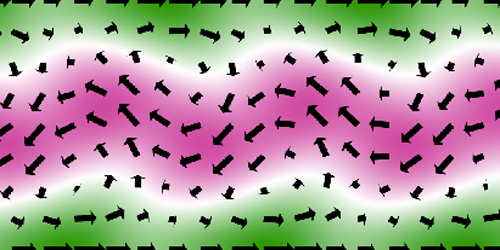Tissue Growth on Curved Surfaces
Epithelial tissue covers all our organs, from the skin to the intestines. To form and renew this tissue, cells must flow over surfaces. This process has been studied in controlled lab experiments that, for practical reasons, are performed on flat surfaces. But biological environments such as the gut are highly curved. To study the impact of curvature on tissue dynamics, Samuel Bell of the Curie Institute in Paris and colleagues developed a hydrodynamic theory that works for bumpy surfaces and shows that tissue movement in a corrugation substantially differs from that along a flat surface [1]. The results could have implications for models of organ morphogenesis and cancer spread.
The team modeled their epithelial tissue as an “active nematic” system—a material made of elongated units that constantly consume energy. This model previously proved successful in describing tissue dynamics over a flat surface. The team expanded it by adding in a force field that accounts for the impact of curvature on how cells align with each other as they move.
Analyzing different corrugation geometries, Bell and colleagues determined a phase diagram for the system, finding that it contains tissue-flow patterns not possible for flat geometries. These patterns include an arrangement known as double shear flow—where the cells at the center and the edges of a corrugation strip move in opposite directions—and one that resembles chains of vortices.
The team is currently working with experimentalists to test their theoretical predictions. They also plan to add noise and cell “turnover” to the model to make it more realistic. In the gut, for instance, cells are continuously added to and extruded from the epithelium, so “we want to link this turnover to curvature,” Bell says.
–Matteo Rini
Matteo Rini is the Editor of Physics Magazine.
References
- Samuel Bell et al., “Active nematic flows over curved surfaces,” Phys. Rev. Lett. 129, 118001 (2022).




